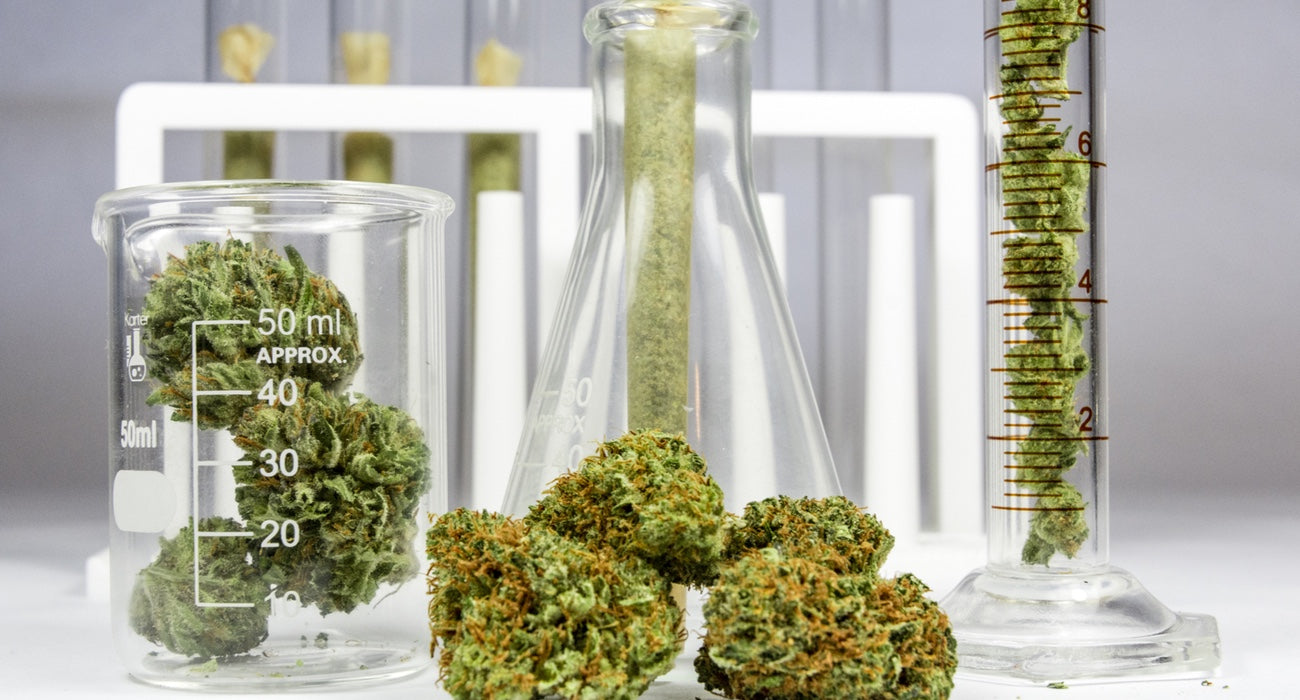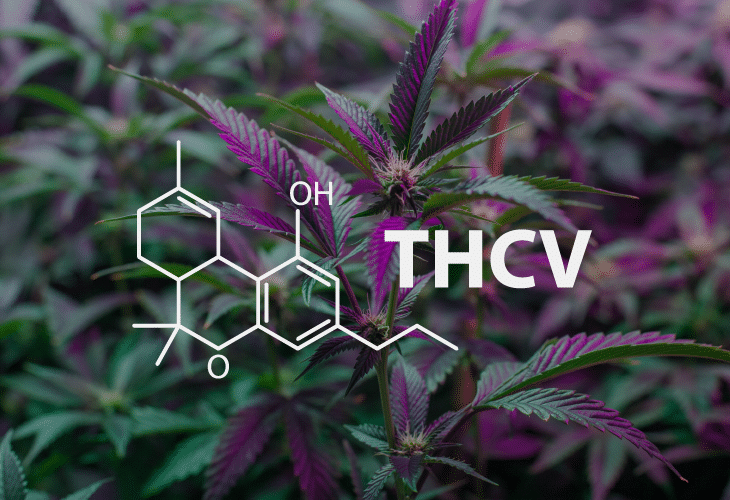
CBDV: What are its Effects & All the information you need to know!
More and more previously unknown or overlooked compounds are emerging as the cannabis environment changes nearly daily. CBDV is one of those substances that was identified many years ago but was never used. After being identified in the 1970s, cannabidivarin is now becoming more well-liked among cannabis consumers.
But why is it becoming so well-liked? How does CBDV stack up against other, more well-known cannabinoids like delta 8, delta 9, delta 10, and CBD in terms of its effects and potential advantages?
CBDV: What is it?
Cannabis plants contain a substance called cannabidivarin, or CBDV. According to research, CBDV is primarily present in cannabis indica strains from Asia, Africa, and South America that are naturally low in THC. According to the general rule of thumb, strains with higher CBD concentrations typically have higher amounts of CBDV. Despite the fact that CBDV has been known for more than 50 years, researchers have just recently started to pay attention to it.
CBDV is non-psychoactive, thus users won't get high from it like they would with CBD. It may be possible to treat CBDV-related illnesses by inhibiting certain physiological processes.
However, we are aware of the following:
- Due to its effectiveness in treating seizures, CBDV has attracted a lot of attention. GPW42006, a CBDV-based medication being developed by GW Pharmaceuticals, the company that created the first CBD-based medication to receive FDA approval, Epidiolex, is intended to treat or prevent epilepsy and other types of seizures. The company's research demonstrates that CBDV has an impact on the neurochemical networks involved in the onset and progression of various types of epilepsy.
- In a 2018 mouse study, scientists discovered that CBDV is effective in treating neurobehavioral problems linked to Rett syndrome, a condition brought on by an X chromosomal mutation that affects girls and results in seizures, speech difficulties, and muscle spasms. Researchers claim that CBDV can heal illnesses that are both chemically and genetically caused, including this one.
- CBDV's ability to treat various important autism spectrum disorders (ASD) issues, such as repetitive behavior problems, cognitive hurdles, communication and social impairments, is now the subject of investigation.
- CBDV appears to have anti-nausea characteristics as well, functioning as an agonist to CB1 receptors and inhibiting nausea responses, according to preliminary tests on rodents.
Can CBDV Be Found in a Drug Test?
CBDV functions similarly to CBD in the body, which itself does not show up on drug testing. We cannot, however, promise that CBDV won't make you fail a drug test. The substance is still relatively new, so it isn't certain whether it will show up on a drug test.
It also depends on what other substances are present because CBDV is frequently combined with other cannabinoids in blended products. Since they can lawfully contain up to 0.3% THC, even these little levels of hemp-derived cannabinoids may be detected in a drug test. Consider CBD isolation products, which contain solely CBD and no additional cannabinoids or substances, if you're worried about your drug test status.
How long is CBDV retained in the body?
Since study on the substance has only recently started, it is impossible to say with certainty how long CBDV stays in your system.

How is CBDV Produced?
Unlike THC and CBD, which are both found in some cannabis plants, CBDDV is not present in all cannabis plants. It primarily originates from landrace indica strains with high CBD content. The term "landrace" refers to a particular cannabis strain that was created in its native environment without interbreeding with other members of the same species.
Landrace strains are unusual because they are kept separate from other plants to avoid cross-contamination. Although CBDV is made from marijuana plants, doing so is against federal law in the US and is only permitted in jurisdictions with legalized medicinal or recreational cannabis. The substance can also be made from hemp, but it can be challenging to locate a supplier.
How safe is CBDV?
It is safe to use up to 1600 mg of CBD every day for two months. However, there isn't enough solid data to determine whether CBDV is safe when taken in higher doses for longer than eight weeks. Additionally, short-term symptoms like nausea, dizziness, headaches, and tiredness are possible.
A trustworthy, open, and dependable source of CBDV is one that meets these criteria. Because the FDA does not carefully oversee the production and distribution of cannabinoids produced from hemp, manufacturers and retailers do not take the essential safety procedures to ensure a pure, contaminant-free product that is safe to eat.
The source of CBDV and all other cannabinoids extracted from hemp is a major question of safety. Be cautious to study the marijuana retailer's manufacturing procedures before choosing one. For its compound extraction, D Squared WorldWide uses organic, non-GMO hemp that was cultivated without the use of pesticides or herbicides. On our website, you may also find third-party lab tests, a transparent and comprehensive ingredient list, and information on each of our products.
CBDV is it legal?
CBDV produced from marijuana is unlawful and categorized as a schedule 1 controlled substance at the federal level. But hemp-derived CBDV is seen as being equally legal.
The Farm Bill of 2018 is entirely to blame for this. The Farm Bill, also known as the Agriculture Improvement Act, decriminalized marijuana on a federal level but legalized hemp and products derived from it. Cannabis plants with a THC content of 0.3% or less are referred to as hemp, whereas cannabis plants with a THC content of 0.3% or more are referred to as marijuana.
Comparing CBDV to many well-known cannabinoids
Although CBDV has been known about for more than 50 years, it is still not nearly as well-known as various cannabinoids like delta 8, delta 9, delta 10, and even CBD. How does it stack up against these other substances in light of what we know?
Delta 8 against CBDV
The main distinction between delta 8 and CBDV, along with the other "deltas" on this list, is that while CBDV is not psychoactive, delta 8 is. But compared to delta 9, or THC, delta 8 isn't as psychoactive. Delta 8 has been referred to as "delta 9's nicer younger sibling" since it is thought to be about half as powerful as delta 9 and has lesser side effects.
The following are some impacts of delta 8:
- Relaxation
- Pain relief
- Appetite Stimulation
- Better sleep
- Digestive support
Delta 9 against CBDV
The primary psychoactive component in hemp is delta 9 or THC, hence the main and most obvious distinction between the two is that while CBDV does not get you high, delta 9 does. Despite being a relatively potent psychoactive substance, delta 9 has a lot of advantages, such as:
- Appetite stimulation
- Relaxation
Delta 10 against CBDV
Contrary to popular assumption, delta 10's name does not indicate that it has a higher psychoactive potency than delta 9 because it has a higher number. Delta 10 is really less robust than both delta 8 and delta 9. To put it another way, despite being psychoactive, it won't get you as high as other tetrahydrocannabinoids.
Its primary effects include:
- Relaxation
- Uplifting properties
- Euphoria
- Increased focus and creativity
- Energy boosts

CBD versus CBDV
As implied by their names, CBDDV and CBD both offer favorable effects and advantages. In contrast to CBD, which has been proven effective in reducing seizures related to Rett syndrome but has not yet received approval for medical use, CBDV has shown promise in reducing seizures related to aggressive and rare forms of epilepsy that do not respond to conventional medications.
In addition, CBD has the following results:
- Muscle relaxant
- Anti-nausea
- Sleep regulation
- Analgesic
Last Words on CBDV
Despite being found in cannabis more than 50 years ago, CBDV has only recently gained the respect it merits. It is non-psychoactive, has properties similar to CBD, and offers consumers a variety of possible advantages.
We don't yet know a lot about the molecule, including whether or not it can cause a positive drug test or how long it stays in the system, as research on it is still in its infancy. Despite this, it is believed to be more beneficial in some ways than other, more well-known cannabinoids, especially CBD—it lessens specific types of seizures that CBD does not. Despite the fact that our CBDV products aren't meant to be used as medications or health supplements, CBDV is swiftly evolving into a necessary household item.



